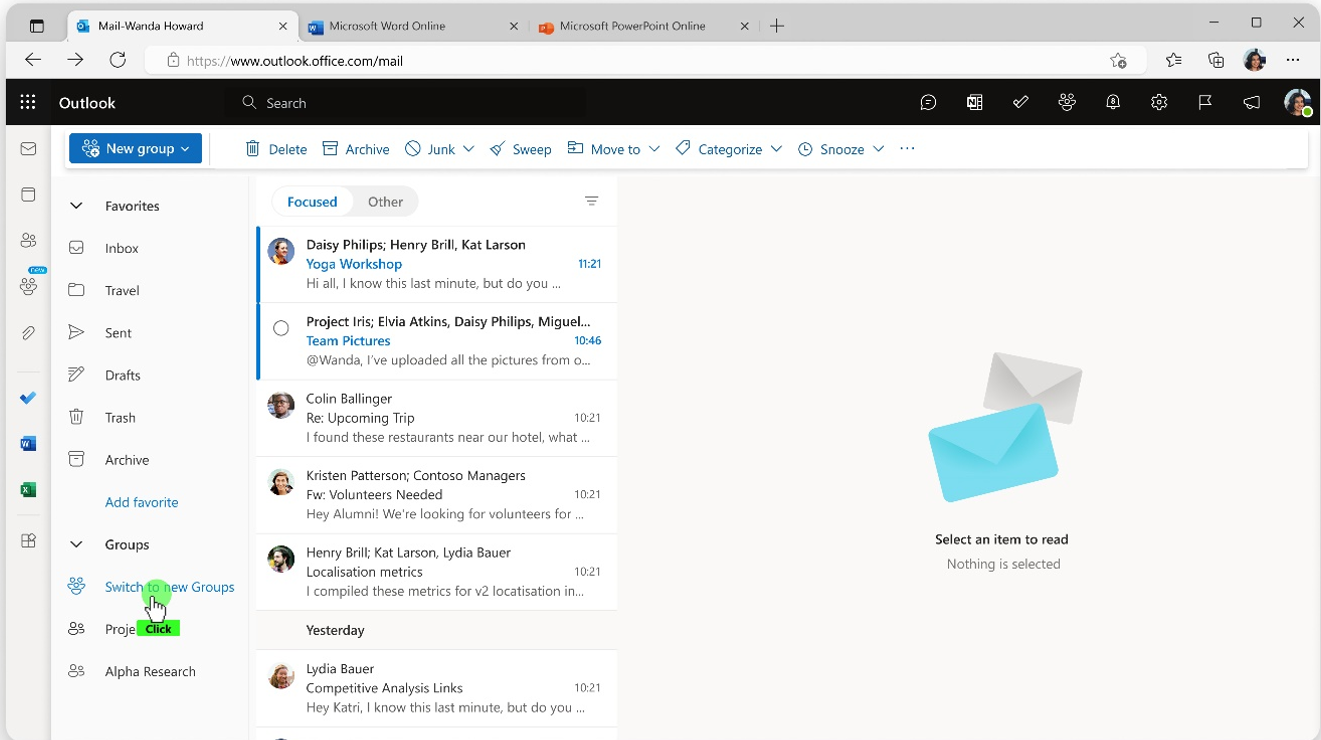
| Announcement ID | MC711025 | Published Date | 01-29-2024 | |
| Service | Exchange | Last Updated | 05-22-2024 | |
| Category | Stay informed | Expiration Date | 07-15-2024 | |
| Roadmap ID | Action Required by Date | |||
| Tags | Admin impact, New feature, User impact | |||
| Summary |
|---|
| Microsoft 365 Groups has a new experience in Outlook on the web, with an optional transition from the old version. Rollout starts in March 2024 and ends by early June 2024. Users can switch back to the old version if desired, and no preparation is needed for this change. |
| More Information |
|---|
We are excited to announce that users will be able to choose to transition from the old Microsoft 365 Groups in Outlook to the new Groups in Outlook on the web and the new Outlook for Windows. The transition is optional for users, who can switch back to old Groups if desired. When this will happen: Worldwide: We will begin rolling out early March 2024 (previously mid-February) and expect to complete by early June 2024 (previously mid-May). How this will affect your organization: About new Groups Outlook now has a new home for Microsoft 365 Groups: one place to connect, communicate, and collaborate with your team. New Groups provides a central destination where users can get critical information from their groups. Benefits of the new Groups experience include:
How to switch to new Groups Users can choose to transition to new Outlook Groups. 1. By default, both old and new Groups are live. 2. After users go to the left navigation in Outlook and select Groups, they can see the Switch to new groups option. 3. After the user switches to new Groups, the new Groups experience becomes the default, and the old Groups experience is hidden from the user. Users can always switch back to old Groups. 4. After switching to new Groups, users can access Groups from the left navigation, by selecting the Groups icon below the People icon or the Go to new Groups link. Switching back to old Groups To switch back to old Groups, turn off the New Groups toggle at the top right. When users switch back to old Groups, users will be presented with an optional survey and then will be taken to old Groups. What you need to do to prepare: No action is needed to prepare for this change. You may want to notify your users about this change and update any relevant documentation as appropriate. FAQs 1. Can users opt out of the transition to new Groups? Is transition flow applicable for all the versions of Outlook?There is no need for an opt-out because the transition to New Groups is optional. Users can use old Groups if desired. If they opt into new Groups, their old Groups will be hidden. All old Groups information is saved in new Groups, and users can switch back to old Groups. The transition is only applicable for Outlook on the web and the new Outlook for Windows. 2. What are the improvements in new Groups?Major improvements include.
3. How to access new Groups?In Outlook on the Web and the New Outlook for Windows, New Groups can be accessed from the Navigation Bar on the left margin, below the people icon. The new Groups experience is not available for Mac. In Windows, this can be accessed from the applet drawer in the Navigation Bar. 4. Is new Groups available in all versions of Outlook?New Groups is available for all users in Outlook for the web and New Outlook for Windows. New Groups is available in Outlook for Windows for Build Version 16.0.16714.10000 or higher till Production CC/MEC. New Groups is not available on Mac. |







